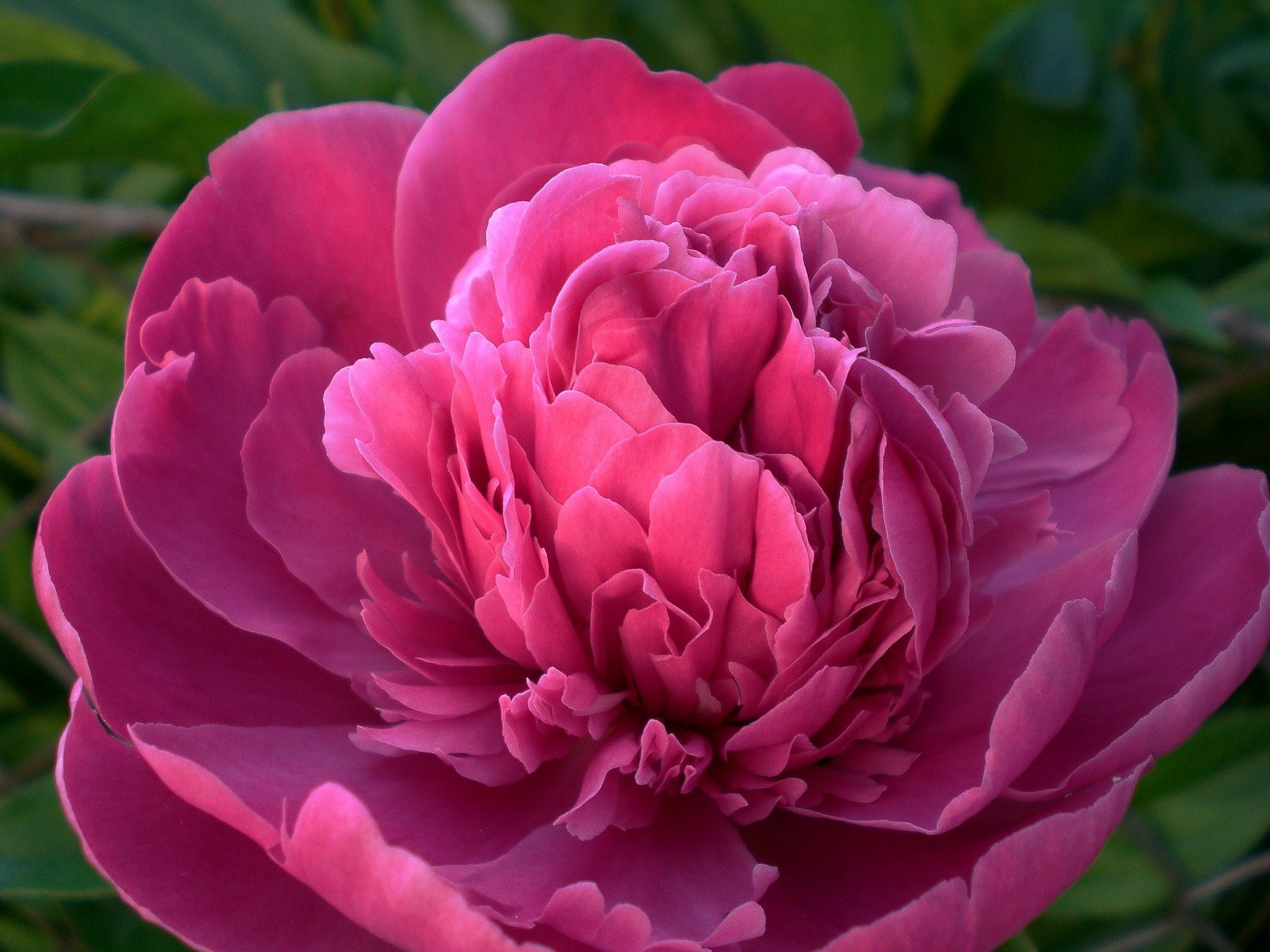Home>Types of Gardening>Ornamental Gardening>When To Cut Back Peony After Blooming


Ornamental Gardening
When To Cut Back Peony After Blooming
Modified: January 22, 2024
Learn the ideal time to trim back your peony plants after they finish blooming. Expert tips for successful ornamental gardening.
(Many of the links in this article redirect to a specific reviewed product. Your purchase of these products through affiliate links helps to generate commission for Chicagolandgardening.com, at no extra cost. Learn more)
Table of Contents
Introduction
Welcome to the wonderful world of ornamental gardening! If you’re an avid gardener or just starting out, you’ve probably come across the stunning and enchanting peony plant. Known for its large, showy blossoms and intoxicating fragrance, the peony is a favorite among many garden enthusiasts. However, to keep your peonies healthy and vibrant, proper maintenance is key.
One essential aspect of peony care is knowing when to cut back your plants after they have bloomed. Trimming back peonies at the right time not only helps promote their overall health and longevity but also encourages robust blooming in the following season.
Understanding the growth cycle of peonies is crucial for deciding when it’s time to grab your gardening shears. This article will guide you through the process, from recognizing the signs that blooming is over to the proper techniques for cutting back your peonies.
Whether you’re a seasoned gardener or a novice exploring the world of ornamental gardening, these insights will help you make the most out of your peony plants and keep your garden looking stunning all year round.
Understanding the Growth Cycle of Peonies
Before diving into when to cut back your peonies, it’s important to understand their growth cycle. The life of a peony plant can be divided into several stages, each with its own unique characteristics and requirements.
In the spring, peony plants emerge from their dormant state, sending up shoots that eventually develop into lush green foliage. During this stage, the plants focus on establishing a strong root system, which is vital for their overall health and resilience.
As the spring progresses, the peony plants start producing buds, with each bud containing the potential for a beautiful flower. These buds gradually develop and, during early summer, they burst open, revealing the stunning blooms that peonies are famous for.
The blooms will typically last for a week or two, putting on a captivating display of colors and shapes. The flowers are not only visually appealing but also emit a delightful fragrance that fills the air around them.
After the blooming period comes to an end, the flowers start to fade and lose their vibrant colors. This is a natural part of the peony’s life cycle and indicates that the plant is shifting its focus from flowering to energy storage.
As the summer progresses and transitions into fall, the peony plant continues to soak up energy from the sun and direct it to the underground rhizomes. This energy is crucial for the plant’s growth and resilience during the upcoming dormant period.
Understanding the growth cycle of peonies is essential because it allows you to determine when it’s the right time to cut back the plants. Cutting them back at the appropriate stage ensures optimal blooming in the following seasons and promotes the overall health and vitality of your peony plants.
When to Cut Back Peonies
Timing is everything when it comes to cutting back peonies. Cutting them back at the right time ensures that you’re not interrupting the natural growth and development of the plant, while also setting the stage for a spectacular blooming season the following year.
Generally, the ideal time to cut back peonies is in the late summer or early fall, after the blooming period has ended and the flowers have started to fade. This typically occurs around August or September, depending on your specific climate and location.
The reason for cutting back peonies at this time is to allow the plant to redirect its energy towards its root system, storing up nutrients and reserves for winter dormancy. By trimming the plant back, you’re encouraging this energy shift and promoting a stronger, healthier plant in the long run.
It’s important to note that cutting back peonies too early in the summer or spring can disrupt their natural growth cycle and may result in reduced blooming or even no flowers at all. Conversely, waiting too long to trim them back, such as in late fall or winter, can make the process more challenging and potentially damage the plant.
Observe the fading blooms of your peonies as a clue that it’s time to get your pruning shears ready. Once the petals have started to wilt and fall off, and the flowers are no longer as vibrant, it’s a clear indication that the blooming phase is over, and you can proceed with cutting back the plants.
By adhering to the proper timing for cutting back peonies, you’ll ensure that your plants have enough time to recover, rejuvenate their root systems, and prepare for the following year’s blooming season, resulting in more robust and stunning flowers for your garden.
Signs that Blooming is Over
Knowing when the blooming period of your peonies is over is crucial for determining the right time to cut back the plants. By recognizing the signs that indicate the end of blooming, you can ensure that you’re not prematurely trimming your peonies and hindering their natural growth and development.
One unmistakable sign that blooming is over is the wilting and fading of the peony flowers. As the blooming phase comes to an end, the petals of the flowers will start to lose their vibrant colors and become droopy. You may notice that the petals of the flower heads begin to wither and fall off, revealing the seed pods beneath.
Another indicator that blooming is over is the drying up of the flower stems. Once the flowers have finished blooming, the stems that held them will start to lose their vitality. They may turn brown or yellow, and the once-green foliage at the base of the stems may start to show signs of discoloration or wilting.
Observing the decline in the overall appearance of the peony blooms is another sign that the blooming phase has concluded. The flowers will no longer look full and vibrant, and their scent may start to fade. This visual change, coupled with the wilting and drying of the flower stems, is a clear indication that it’s time to consider cutting back your peonies.
It’s important to note that the signs of the end of blooming may vary slightly depending on the peony variety and your specific growing conditions. Some peonies may have longer blooming periods than others, while others may fade more quickly. Pay close attention to the condition of the flowers and stems to determine the precise time for cutting back.
By familiarizing yourself with these signs, you can confidently assess when the blooming phase of your peonies has concluded, allowing you to proceed with pruning at the optimal time and ensuring the continued health and beauty of your plants.
How to Properly Cut Back Peonies
When it’s time to cut back your peonies, it’s important to follow the proper techniques to ensure the health and vitality of the plants. Taking care to cut back peonies correctly will promote healthy growth, increased blooming, and overall plant vigor.
Here’s a step-by-step guide on how to properly cut back peonies:
- Start by sterilizing your pruning shears with a disinfectant spray or rubbing alcohol. This helps prevent the spread of disease and ensures a clean cut.
- Locate the flower stems that have finished blooming and determine where to make the cut. Look for healthy, green foliage and choose a point just above it.
- Hold the stem firmly with one hand and position the pruning shears just above the healthy foliage. Make a clean, angled cut, approximately one to two inches above the ground. Avoid cutting too close to the ground, as this can potentially damage the emerging buds for the next season.
- As you trim each stem, collect the cuttings and dispose of them. Discard the decaying flower heads and stems in a compost pile or trash bag.
- Continue cutting back each flower stem that has finished blooming, working methodically through the plant. Take care not to damage any new shoots or buds that may be emerging.
- Once you’ve finished cutting back all the spent flower stems, clear away any debris or plant matter from around the base of the peony plants. This helps prevent the spread of diseases and pests.
- Consider applying a layer of organic mulch, such as compost or shredded leaves, around the base of the peony plants. This will help conserve moisture, suppress weed growth, and provide nutrients as it breaks down over time.
By following these steps, you’ll be able to properly cut back your peonies, encouraging healthy growth and preparing the plants for the upcoming dormant period. With a little care and attention, your peonies will reward you with stunning blooms year after year.
Benefits of Cutting Back Peonies
Cutting back your peonies at the appropriate time offers numerous benefits for the overall health and performance of the plants. While it may seem counterintuitive to remove parts of a plant that has just bloomed, proper pruning is essential for maximizing blooming potential and ensuring the longevity of your peonies.
Here are some key benefits of cutting back peonies:
- Promotes healthy growth: By trimming back the spent flower stems, you encourage the peony plants to redirect their energy towards establishing a strong root system. This helps the plant absorb vital nutrients and increases its overall strength and resilience.
- Increases blooming potential: Cutting back peonies allows the plants to allocate their energy towards bud development for the following season. By removing the fading flowers, you stimulate the growth of new, healthy flower buds, resulting in more abundant blooms in the future.
- Improves air circulation and reduces disease: Trimming back peonies helps improve air circulation around the plant, reducing the risk of fungal diseases. By removing decaying flower heads and foliage, you minimize the chances of infection and promote a healthier growing environment.
- Controls pests and weeds: Clearing away the spent flower stems and debris from around the base of the peony plants can help deter pests and prevent weed growth. This reduces competition for nutrients and minimizes the risk of damage to the plants.
- Maintains a tidy appearance: Cutting back peonies after blooming helps maintain a neat and tidy appearance in your garden. Removing the fading flowers and stems keeps the plants looking fresh and enhances the overall aesthetic appeal of your ornamental garden.
- Encourages plant longevity: Properly pruning and cutting back peonies promotes their long-term health and vitality. By allowing the plant to redirect its energy towards root growth and storing nutrients, you enhance its chances of surviving harsh winters and thriving for many years to come.
By understanding the benefits of cutting back peonies, you can appreciate the importance of this maintenance task in prolonging the blooming season, improving the overall health of your plants, and creating a beautiful and vibrant garden.
Common Mistakes to Avoid when Cutting Back Peonies
While cutting back peonies is an important part of their care, it’s crucial to avoid certain mistakes that can potentially harm the plants or diminish their blooming potential. To ensure the health and longevity of your peonies, be mindful of the following common mistakes:
- Pruning too early: One of the biggest mistakes gardeners make is pruning their peonies too early in the spring or summer. Cutting back peonies before they have fully bloomed can disrupt their growth cycle and result in reduced flowering. Wait until the flowers have faded and the stems have started to wilt before pruning.
- Pruning too late: On the other hand, waiting too long to cut back your peonies can also be detrimental. Pruning in late fall or winter can damage the emerging buds and lead to poor blooming in the following season. Aim to trim your peonies in late summer or early fall, after the blooming period has ended.
- Trimming too close to the ground: When cutting back peonies, avoid cutting the stems too close to the ground. Leave a few inches of stem above the soil to protect the emerging buds for the next season. Cutting too close to the ground may result in weaker growth or no blooms in the following year.
- Skipping sterilization: It’s important to sterilize your pruning shears before cutting back your peonies to prevent the spread of diseases. Failure to sterilize the shears can potentially introduce harmful pathogens to the plants, causing infections and compromising their health.
- Removing too much foliage: While it’s necessary to remove the spent flower stems, be cautious not to remove too much foliage. The leaves of the peony plant play a crucial role in capturing sunlight and producing energy for the plant. Leaving an adequate amount of foliage ensures the plant has enough energy to store for next year’s blooms.
- Overlooking cleaning and disinfection: After cutting back your peonies, it’s important to clean up the area around the plants and dispose of any debris. Leaving decaying plant matter can attract pests and harbor diseases. Proper cleaning and disinfection help maintain a healthy growing environment for your peonies.
By avoiding these common mistakes when cutting back peonies, you can ensure that your plants remain healthy, vibrant, and primed for a spectacular blooming season year after year.
Conclusion
Properly cutting back your peonies is an essential part of their overall care and maintenance. Understanding the growth cycle of peonies, knowing when to cut them back, and utilizing the correct techniques can contribute to healthier, more vibrant plants and bountiful blooms.
By observing the signs that indicate blooming is over, such as wilting flowers and fading foliage, you can confidently determine the right time to prune your peonies. Timing is crucial, as cutting them back too early or too late can disrupt their growth cycle and result in reduced blooming in the following season.
When it’s time to cut back your peonies, ensure that you use clean and sterilized pruning shears, make angled cuts just above healthy foliage, and dispose of any debris to prevent the spread of diseases and pests. Avoid common mistakes like pruning too close to the ground or removing excessive foliage.
The benefits of cutting back peonies are numerous, including promoting healthy growth, increasing blooming potential, improving air circulation, and maintaining a tidy appearance in your garden. By properly pruning your peonies, you can set the stage for their long-term health and vitality.
Remember, each peony variety and growing situation may have slight differences in timing and care requirements. Observing and adapting to the specific needs of your peonies will ensure the best results.
So, embrace the art of cutting back peonies and enjoy the rewards of stunning blooms and a flourishing garden. With a little care and attention, your peonies will continue to dazzle and delight for years to come.




